Apple Records – The Story
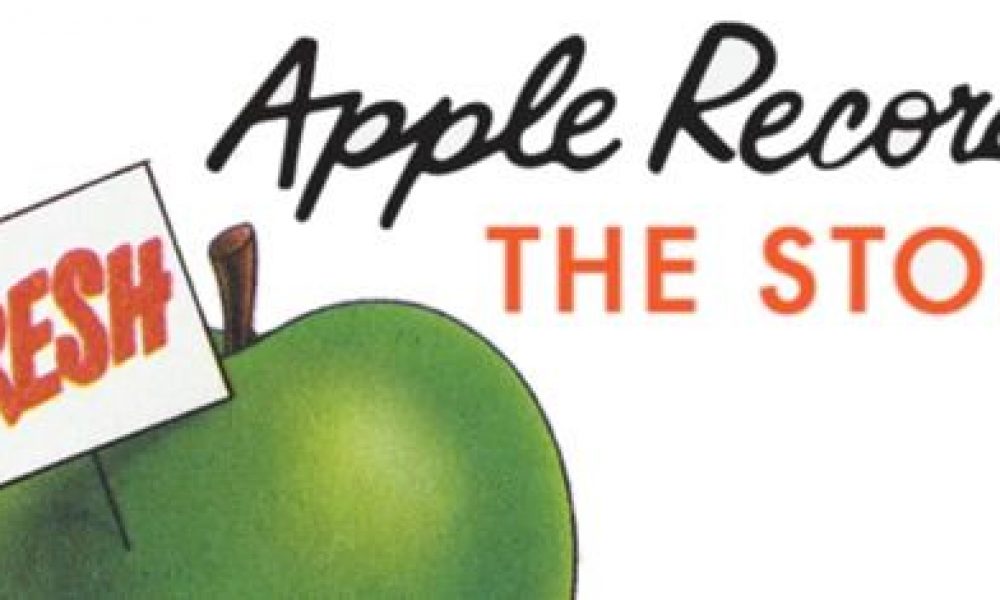
The Apple Records label is renowned for its eclecticism. Its catalogue is an appealing mix of classic rock and pop, gentle folk, funky soul, devotional music, contemporary classical and modern jazz. Several artists who went on to become household names began, or were given a kickstart by Apple, among them Mary Hopkin, Billy Preston, James Taylor and John Tavener.
In this broad church there was no one identifiable Apple Records sound, as you might get with labels such as Motown or Stax. That said, anyone brought up on the music of Apple’s founders, The Beatles, will be already well accustomed to the idea of a wide variety of styles nestling under one musical umbrella.
 The ‘White Album’, aka The Beatles was the first Beatles LP issued on Apple, and it perfectly foreshadowed the diverse delights that would be on offer from Apple’s small roster of artists. Across two records in one gatefold sleeve John, Paul, George and Ringo delivered a veritable smorgasbord of styles that ranged from solo acoustic ballads, straight-ahead pop, pastiche and parody, to experimental sound collage and all-time classic rock.
The ‘White Album’, aka The Beatles was the first Beatles LP issued on Apple, and it perfectly foreshadowed the diverse delights that would be on offer from Apple’s small roster of artists. Across two records in one gatefold sleeve John, Paul, George and Ringo delivered a veritable smorgasbord of styles that ranged from solo acoustic ballads, straight-ahead pop, pastiche and parody, to experimental sound collage and all-time classic rock.
Not surprisingly, no one Apple artist replicated such a glorious scattershot strategy on one particular album. But there is one, a various artists set, that does all that for you – Come And Get It — The Best Of Apple Records. It includes memorable chart hits from Mary Hopkin, Billy Preston and Badfinger; and top-notch 45s by Jackie Lomax, Doris Troy and the Radha Krishna Temple, including ‘Those Were The Days’ and ‘Goodbye’, ‘That’s The Way God Planned It’, plus ‘Come And Get It’ and ‘Day After Day’ all of which graced the UK Top 10 between 1968 and 1972.
Come And Get It, includes the original 1968 version of James Taylor’s signature tune ‘Carolina In My Mind’. Most fans will know the laid-back re-recording from 1976, whereas the Apple version glints with the springtime of youth. The baroque embellishments furnished by strings arranger Richard Hewson, polished further by producer Peter Asher, only add to the appeal.
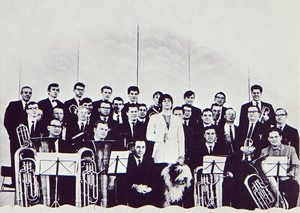 Chief among the exclusives to be found on Come And Get It is a selection of one-off singles by Apple artists who didn’t issue an album on the label. This selection defines the very meaning of the word eclectic including the ancient oompah of the Black Dyke Mills Band, the traditional northern English brass ensemble whose roots stretch back to 1816. Their ‘Thingumybob’ is an obscure Paul McCartney tune written for a short-lived TV sitcom.
Chief among the exclusives to be found on Come And Get It is a selection of one-off singles by Apple artists who didn’t issue an album on the label. This selection defines the very meaning of the word eclectic including the ancient oompah of the Black Dyke Mills Band, the traditional northern English brass ensemble whose roots stretch back to 1816. Their ‘Thingumybob’ is an obscure Paul McCartney tune written for a short-lived TV sitcom.
Then there’s ‘King Of Fuh’, a mighty fine paean of Sixties whimsy by New York absurdist Brute Force. This record became infamous for its lyric referring to ‘the fuh-king’ and was banned by the ombudsman of obscenity overseeing the nation’s finer feelings. Not only was ‘King Of Fuh’ never played on the radio, it was denied even manufacture by Apple’s distributor EMI. The Beatles had the record privately pressed instead, but even then it never made the shops. Thus was born one of the most sought-after rarities associated with the band. These days you can expect to express several thousand English pounds if you want the vintage vinyl on the original Apple label. Luckily, you can now stream the song for virtually fuh all.
Controversy also dogged the Scottish band White Trash, who issued two singles on Apple. While political correctness could be happily dispensed with if within the realm of TV satire, when it came to rock music, even a suggestion of reverse racism was stamped out by the cultural custodians of the day. Hence the truncated name, Trash, for the band’s second Apple 45, a storming cover of their paymasters’ ‘Golden Slumbers’/’Carry That Weight’.
The late Errol Brown, the much-loved voice of Seventies disco kings Hot Chocolate, was first heard on record thanks to Apple. In 1969, the group gave John Lennon’s ‘Give Peace A Chance’ a reggae make-over, and when they sent their recording to Apple for approval, Lennon loved it and instructed the label to release it forthwith. Intriguingly, the record goes beyond a note-for-note rendition of John’s Plastic Ono Band anthem — check out the changes in the lyrics for a true Apple original.
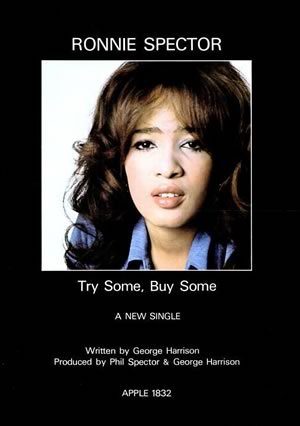 Not all Apple’s singles artists were newbies. Ronnie Spector, then wife of record-producing overlord Phil, had been first among equals within the wonderful Ronettes, who’d toured with The Beatles back in 1964. ‘Try Some, Buy Some’ is a George Harrison song, a Harrison-Spector production, and a marvelous record by Ronnie that not only pleased George to the point that he later re-recorded it himself using the same backing from Ronnie’s version, but it also inspired the wall-of-mandolins on John Lennon’s ‘Happy Xmas (War Is Over’), itself co-produced by Phil Spector.
Not all Apple’s singles artists were newbies. Ronnie Spector, then wife of record-producing overlord Phil, had been first among equals within the wonderful Ronettes, who’d toured with The Beatles back in 1964. ‘Try Some, Buy Some’ is a George Harrison song, a Harrison-Spector production, and a marvelous record by Ronnie that not only pleased George to the point that he later re-recorded it himself using the same backing from Ronnie’s version, but it also inspired the wall-of-mandolins on John Lennon’s ‘Happy Xmas (War Is Over’), itself co-produced by Phil Spector.
Chris Hodge was of the few Apple artists who came to the label under the tutelage of Ringo Starr. In the early Seventies, Ringo had been captivated by the new wave of fan mania, as seen surrounding T. Rex, and teamed up with Marc Bolan for the Apple Films production Born To Boogie. Marc was already a star but Chris Hodge was in search of a record deal. As with Marc, Hodge also looked to the celestial world for his inspiration, and a created a sound not dissimilar (Bolan’s vocal warble not withstanding). Chris wore stars on his lapels and stars on his shoes, and his head was way up there too. His UFO-themed single, ‘We’re On Our Way’, was described as ‘eminently cosmic’ by Cash Box magazine. Indeed, it’s a space-age glam-rock corker.
Eclecticism earns itself a gold star with the Sundown Playboys’ ‘Saturday Nite Special’. This infectious accordion-and-fiddle romp is in the Cajun tradition of southern Louisiana. And while this trans-generational combo couldn’t match the Black Dyke Mills Band in the antiquity stakes, they too are still active and date back, if not centuries, then at least eight decades to 1945. Suitably, it was the band’s youngest member, the then 18-year old Pat Savant, who sent a local pressing of ‘Saturday Nite Special’ to Apple, where it attached the attention of George Harrison.
More recently, Morrissey has championed ‘Saturday Nite Special’, and he included it as the opening track on his Under The Influence compilation of personal faves in 2003, where it rubs shoulders with Patti Smith, the Ramones, and the New York Dolls.
Bill Elliot & the Elastic Oz Band’s ‘God Save Us’ is a Plastic Ono Band single in all but name. The song was John Lennon’s fundraiser for the underground magazine Oz. In 1971, the editors stood in the dock, charged with that old chestnut, obscenity. Among the crimes committed in their ‘Schoolkids’ issue of May 1970 was a pornographic cartoon featuring a sexually aroused version of ‘Rupert the Bear’, whose ursine unimpeachability had been scurrilously corrupted into a Robert Crumb character from the waist down, in flagrante delicto with all his naughty parts clearly displayed. The editors ended up in prison, briefly, but their convictions were overturned upon appeal.
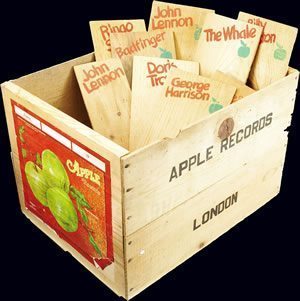 John’s song, ‘God Save Us’, begun life as the more overt ‘God Save Oz’, and in an attempt to avoid hogging the limelight, he replaced his own vocals with Bill Elliot’s. Bill was singer with the band Splinter, who’d signed to Apple but whose records eventually appeared on George Harrison’s Dark Horse label.
John’s song, ‘God Save Us’, begun life as the more overt ‘God Save Oz’, and in an attempt to avoid hogging the limelight, he replaced his own vocals with Bill Elliot’s. Bill was singer with the band Splinter, who’d signed to Apple but whose records eventually appeared on George Harrison’s Dark Horse label.
‘Sweet Music’ by Lon and Derrek van Eaton is a more sinless affair, a warm mid-tempo soft-rocker that received the thumbs up from three solo Beatles — John, George and Ringo. Indeed, George produced the track, while Ringo played drums alongside session virtuoso Jim Gordon. The van Eatons were the first Apple artists to record in the state-of-the-art Apple Studios in the basement of 3 Savile Row. Their Apple album, Brother, is of a consistently high quality in terms of songwriting, performance and production, the last of which was mostly handled by long-time Beatles associate Klaus Voormann.
Turning to Apple’s album catalogue, no fewer than 16 of them can now be accessed here with the mere click of a mouse. Badfinger rule the roost with four titles to their name — Magic Christian Music, No Dice, Straight Up and Ass. Mary Hopkin has two, Post Card from the beginning of her tenure with Apple and Earth Song-Ocean Song from the end. Billy Preston also has two, That’s The Way God Planned It and Encouraging Words. In the non-rock department, the Modern Jazz Quartet and composer John Tavener have two as well — Under The Jasmin Tree and Space from the former, and The Whale and Celtic Requiem from the latter. With one Apple album each is James Taylor, Doris Troy, the Radha Krishna Temple, and Jackie Lomax. Jackie’s album is called Is This What You Want?, while those by the other three are all self-titled.
BADFINGER
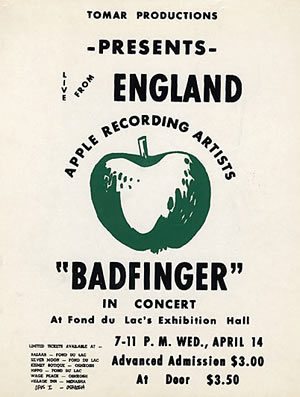 Badfinger remain Apple Records’ greatest asset if we are talking sales and musical influence. Their Apple singles all went Top 10 in the UK, the US and in Canada between 1970 and 1972: ‘Come And Get It’, ‘No Matter What’, and ‘Day After Day’; while the non-UK ‘Baby Blue’ was a Top 20 hit in the last of those two countries. Their debut Apple single, ‘Maybe Tomorrow’, issued under their original name The Iveys, was a minor hit in the States and can found on the Come And Get It compilation.
Badfinger remain Apple Records’ greatest asset if we are talking sales and musical influence. Their Apple singles all went Top 10 in the UK, the US and in Canada between 1970 and 1972: ‘Come And Get It’, ‘No Matter What’, and ‘Day After Day’; while the non-UK ‘Baby Blue’ was a Top 20 hit in the last of those two countries. Their debut Apple single, ‘Maybe Tomorrow’, issued under their original name The Iveys, was a minor hit in the States and can found on the Come And Get It compilation.
While their own sound was heavily influenced by The Beatles — and whose wasn’t? — Badfinger are power-pop pioneers, trailblazing a no-nonsense approach for honed-to-perfection songwriting, heartfelt performances and dedicated musicianship. Aside from that, their best-loved song wasn’t even an official single for the band. ‘Without You’ was originally the final track on Side 1 of No Dice, but become a massive No. 1 single for both Harry Nilsson in 1972 (in the UK, the US and four other countries, plus a Grammy award for Harry), and Mariah Carey in 1994 (UK and also four other countries). Mariah’s diva-styled version sold over a million copies, earning no fewer than five gold and three platinum awards.
Badfinger’s songwriting rarely falls below the calibre of ‘Without You’. But as irony would have it, their greatest singles success came via a cover version, and their only one on record. But if you have to cover a song because your record label suggests so, then the songwriter may as well be one of the greatest of all time, Paul McCartney. So it was with ‘Come And Get It’, which Paul also produced. He had written the song for the Magic Christian movie starring Peter Sellers and Ringo Starr and donated it to the band after declining to record it himself. Badfinger contributed the barnstormer ‘Rock Of All Ages’ to the film, as well as the wistful ‘Carry On Till Tomorrow’, both of which also boasted a McCartney production credit, while the latter had its strings arranged and conducted by George Martin.
Badfinger’s albums for Apple are remarkably consistent. There’s hardly a filler track to be found, and thanks to their steadfastly traditional approach with very few, if any, traces of whatever contemporary sound had been flavor of the week at the time, their records stand the test of decades and these days do indeed seem as timeless as the title of their latest compilation suggests. No Dice includes highlights such as ‘No Matter What’ — the birth of power pop in that opening crunchy riff — ‘Midnight Caller’, ‘We’re For The Dark’ and ‘Without You’. And ‘Love Me Do’. No, not that one, but an original song by guitarist Joey Molland.
Straight Up from 1972 remains the band’s most cherished album. It had a complicated recording history, but what sticks out among the minutiae of studio facts is that George Harrison produced four tracks on the final release — ‘I’d Die Babe’, ‘Name Of The Game’, ‘Suitcase’ and ‘Day After Day’ — and he can be heard playing his trademark slide guitar in a close-matched duet with the band’s remarkable Pete Ham on ‘Day After Day’. That song peaked at No. 4 in the US and earned the band their only gold disc. The album’s cover comes over as a Seventies suede ’n’ leather update of With The Beatles, complete with diminutive drummer offset below the others, even if everyone involved would say this was a coincidence.
Ass, the band’s final album for Apple, was heavier than previous outings but didn’t prove as popular at the time. It was issued in the US in 1973 and in 1974 in the UK, and echoed Magic Christian Music in that the cover was a painting in the surrealist style. By the time Ass was released, Badfinger had already left Apple for an ill-fated stint at Warner Bros (following a similar move by James Taylor, who fared much better commercially, and Jackie Lomax, who didn’t). The cover’s donkey-with-a-carrot idiom was strangely prophetic, a visual representation of a reward — and a giant, sky-sized one at that — for a goal that is always out of reach. The facts of the band’s story is that, post-Apple, their potential was cut short by ghastly business machinations. But even before that, they were sorry to leave, as testified by the opening track on the album, and the band’s swansong single for Apple, ‘Apple Of My Eye’.
MARY HOPKIN
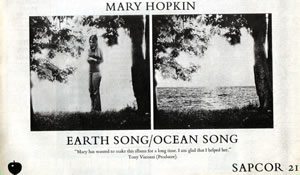 Mary Hopkin was Apple’s first great success. Paul McCartney produced her debut single, ‘Those Were The Days’, which shifted in excess of six million copies around the world, and he wrote and produced her follow-up, ‘Goodbye’, which via the power of Apple was promoted in nearly 40 countries. Mary’s two albums for the label are very different affairs. Post Card, from 1969, was produced by Paul, who also chose most of the songs. At just 17 when she signed to Apple, Mary had developed her singing voice into an instrument of cut glass purity, but she had yet to venture into songwriting. Instead, the album leaned heavily on favourite writers of Paul’s such as Donovan and Harry Nilsson. And also on songs from the bygone pre-War era, like ‘Inch Worm’ and ‘There’s No Business Like Show Business’ that fitted the instant nostalgia template set by ‘Those Were The Days’.
Mary Hopkin was Apple’s first great success. Paul McCartney produced her debut single, ‘Those Were The Days’, which shifted in excess of six million copies around the world, and he wrote and produced her follow-up, ‘Goodbye’, which via the power of Apple was promoted in nearly 40 countries. Mary’s two albums for the label are very different affairs. Post Card, from 1969, was produced by Paul, who also chose most of the songs. At just 17 when she signed to Apple, Mary had developed her singing voice into an instrument of cut glass purity, but she had yet to venture into songwriting. Instead, the album leaned heavily on favourite writers of Paul’s such as Donovan and Harry Nilsson. And also on songs from the bygone pre-War era, like ‘Inch Worm’ and ‘There’s No Business Like Show Business’ that fitted the instant nostalgia template set by ‘Those Were The Days’.
Mary has made no secret that she much prefers her second collection, Earth Song – Ocean Song, which relies upon songs of her own choosing, mostly by contemporary folkies such as Harvey Andrews, Ralph McTell, Cat Stevens and Liz Thorsen, the last of whom composed the twin tracks that form the album’s title. Tony Visconti, fresh from his celebrated studio wizardry with superstars David Bowie and Marc Bolan, produced this album of gentle heartfelt folk with much care and finesse; and it all ended very happily indeed (for a while), when Tony and Mary were married shortly afterwards.
JAMES TAYLOR
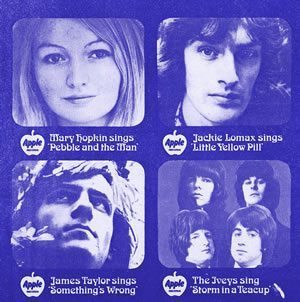 Although just 20 when he became a regular at 3 Savile Row, in terms of his music James Taylor arrived in the UK from his native US fully formed. Many of the songs on his debut, self-titled album, issued by Apple in 1968, had been written and recorded a few years earlier for his band, The Flying Machine: ‘Rainy Day Man’, ‘Knocking ’Round The Zoo’, ‘Something’s Wrong’, ‘Night Owl’ and ‘Brighten Your Night With My Day’. James re-recorded these tracks for Apple in London, at which producer Peter Asher introduced the series of baroque links between the tracks in an attempt, post-Sgt Pepper, to gel the album together as a concept, rather than a mere collection of songs from which singles could be plucked. Which explains why in the UK at least, there was no release of ‘Carolina In My Mind’ on 45 in 1969 — the UK single, Apple 32, dates from a year later when Apple reissued James Taylor in the wake of his massive success with Sweet Baby James.
Although just 20 when he became a regular at 3 Savile Row, in terms of his music James Taylor arrived in the UK from his native US fully formed. Many of the songs on his debut, self-titled album, issued by Apple in 1968, had been written and recorded a few years earlier for his band, The Flying Machine: ‘Rainy Day Man’, ‘Knocking ’Round The Zoo’, ‘Something’s Wrong’, ‘Night Owl’ and ‘Brighten Your Night With My Day’. James re-recorded these tracks for Apple in London, at which producer Peter Asher introduced the series of baroque links between the tracks in an attempt, post-Sgt Pepper, to gel the album together as a concept, rather than a mere collection of songs from which singles could be plucked. Which explains why in the UK at least, there was no release of ‘Carolina In My Mind’ on 45 in 1969 — the UK single, Apple 32, dates from a year later when Apple reissued James Taylor in the wake of his massive success with Sweet Baby James.
This Apple debut has often been overlooked in light of James’ multi-platinum, five-times Grammy-award winning career that followed. But this is where it all started. It’s all here — the songs, the songwriting, the contemplative vocals, the neat, classically-informed finger-picking guitar style — ready made and waiting to dominate the airwaves for the next few decades. If you like James Taylor and haven’t yet heard this, you really need to start streaming James Taylor.
JACKIE LOMAX
Jackie Lomax is another that arrived at Apple having paid his dues as the member of a band. In Jackie’s case it was The Undertakers, Liverpool veterans from the Cavern days and old running mates of the Fab Four. In fact, Jackie even once sat in on drums for the Silver Beetles — “Just one song. I was terrible”. Jackie went solo following the advice of John Lennon — who was also instrumental in his signing to the newly formed Apple Publishing in 1967 — but it was a different Beatle, George Harrison, who took Jackie under the Apple wing as a recording artist for the album Is This What You Want?
George assembled an A-list backing band for Jackie that included himself (also acting at producer), Paul McCartney, Ringo Starr, Eric Clapton, Klaus Voormann and supersession keyboard king Nicky Hopkins. The majority of the songs were Jackie’s own and the result is a great, consistently rewarding late Sixties album of rock and R&B with touches of psychedelia and a tower of soulful vocals. The one non-original was ‘Sour Milk Sea’, a Harrisong that became Jackie’s first Apple single. It’s a powerhouse ‘White Album’ era song that would have sat easily within The Beatles’ canon. Indeed, with Paul, George and Ringo playing on it, it’s virtually a Beatles record with a guest vocalist. No Beatles fan worth their salt should be without it.
BILLY PRESTON
Billy Preston is fondly remembered for many things. He was a legendary side man — although ‘side’ can never do justice to his contributions to the work of others— for everyone from Sam Cooke to Little Richard, from Joe Cocker to Elton John, but most famously for the Rolling Stones and, of course, for The Beatles themselves. He is remembered for his precocious early talent as an 11-year old, duetting with Nat ‘King’ Cole on US TV, and his massive US chart-topping singles, ‘Outta-Space’, ‘Will It Go Round In Circles’, ‘Space Race’ and ‘Nothing From Nothing.’
His name also appears in a hallowed position beneath The Beatles’ own on their ‘Get Back’ single, and he famously played piano and organ, as well as ‘That’s The Way God Planned It’, his Top 10 UK hit of that year — an Apple Record produced by George Harrison.
Gospel, soul, R&B and funk influences permeate Billy’s music, and all of these elements combine in most spectacular ways on his two George-produced albums for Apple, That’s The God Planned It and Encouraging Words. There’s a born-to-it sense of greatness about these records that becomes apparent with even a cursory listen. Mostly, Billy recorded his own memorable songs, but when he chose a cover he sprinkled magic all over it and made it his own — Dylan’s ‘She Belongs To Me’, WC Handy’s ‘Morning Star’, Lennon & McCartney’s ‘I’ve Got A Feeling’, and George’s own ‘All Things Must Pass’. And ‘My Sweet Lord’ too, which George donated even before he’d released it himself.
And between the two of them, Billy and George came up with one of the best tracks tucked away within this magnificent Apple Records catalogue: ‘Sing One For The Lord’, a spirit-elevating, gospel hand-waver, and a musical bridge of sorts between ‘That’s The Way…’ and ‘My Sweet Lord’. You gotta hear it.
DORIS TROY
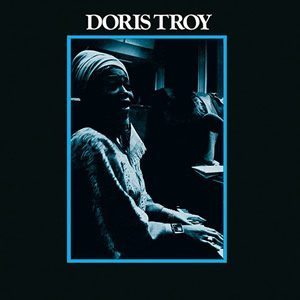 Doris Troy is an unsung heroine of transatlantic Sixties soul. While living in New York in the early Sixties she had been talent spotted by James Brown at the Apollo Theater in Harlem, and had issued ‘Just One Look’ on Atlantic — covered here by The Hollies on EMI. Relocating to Britain at the end of the decade she became the go-to backing vocalist on the London session scene, forming a loose triumvirate alongside the similarly talented Marsha Hunt and Madeline Bell. Her BVs can be heard on records by everyone from Edgar Broughton and Nick Drake to the Rolling Stones and Pink Floyd.
Doris Troy is an unsung heroine of transatlantic Sixties soul. While living in New York in the early Sixties she had been talent spotted by James Brown at the Apollo Theater in Harlem, and had issued ‘Just One Look’ on Atlantic — covered here by The Hollies on EMI. Relocating to Britain at the end of the decade she became the go-to backing vocalist on the London session scene, forming a loose triumvirate alongside the similarly talented Marsha Hunt and Madeline Bell. Her BVs can be heard on records by everyone from Edgar Broughton and Nick Drake to the Rolling Stones and Pink Floyd.
Doris was invited to join Apple by George Harrison after he met her at a Billy Preston session. He was already a fan and was familiar with her 1963 Atlantic album, the snappily titled Doris Troy Sings Just One Look & Other Memorable Selections. She jumped at the chance to join a label that would give her complete artistic control over her recordings. George’s famous address book brought in a holy host of guest musicians from Ringo, Eric Clapton and Klaus Voormann, to Peter Frampton, Delaney & Bonnie, Bobby Whitlock, Jim Gordon and Stephen Stills.
Doris Troy is a bundle of funky-soul R&B bliss. It can lift the listener like a Pentecostal spiritual, fill the floor like a groove from the Godfather of Soul himself and wow the uninitiated with its stellar line-up and tip-top compositions. There are some unique and surprising collaborations too, such as ‘Ain’t That Cute’ (Harrison-Troy), ‘I’ve Got To Be Strong’ (Lomax-Troy), and ‘Gonna Get My Baby Back’ and ‘You Give Me Joy Joy’ (both Harrison-Troy-Starkey-Stills). For some bizarre reason this album has often failed to gain the recognition it deserves. Now that it’s available online, there is one less excuse for that sorry situation to continue.
MODERN JAZZ QUARTET
Of course, The Beatles had no kick against modern jazz, why would they? But it’s probably safe to say that no specific member is known for his particular passion in that field. Instead, the Modern Jazz Quartet, the pre-eminent ensemble of that noble genre, came to Apple thanks to the label’s first head honcho, the suave and sophisticated Ron Kass.
Apple was often about all things new, but it was also about bringing the not-so-new to potentially fresh audiences. The history of the MJQ had begun back in the distant 1940s and continued until the mid-Seventies when the combo disbanded (only to reform later). In between, and particularly in the Fifties, they helped shape modern jazz. They were also early pioneers of Third Stream Music, in which jazz meets classical through the prism of improvisation.
Few fans of the 25 or so studio albums in the Quartet’s catalogue — most of them on Atlantic Records — could have been disappointed with Apple’s Under The Jasmin Tree and Space. The seamless weave of John Lewis’ piano, Milt Jackson’s vibraphone, Percy Heath’s bass and Connie Kay’s drums made for the predicted delights that wouldn’t have been out of place ten years either side of the Sixties.
RADHA KRISHNA TEMPLE
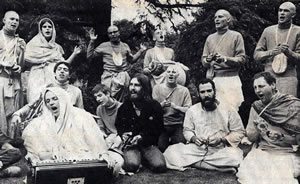 One of the most improbable groups to have ever graced the pop charts is the Radha Krishna Temple who, unlike their near namesakes Ash Ra Tempel and Acid Mothers Temple, were actually a temple. Their Apple singles, ‘Hare Krishna Mantra’ and ‘Govinda’, were Top 30 hits in 1969 and 1970 — the powerful and moving ‘Govinda’ can be found on Come And Get It — The Best Of Apple Records. The Radha Krishna Temple were, and remain to this day, a religious group dedicated to the worship of two key deities in the vast Hindu pantheon of India — the “all attractive” Krishna, and his female consort Radha. It’s icons of this divine couple that are depicted on the cover of the Apple album The Radha Krsna Temple.
One of the most improbable groups to have ever graced the pop charts is the Radha Krishna Temple who, unlike their near namesakes Ash Ra Tempel and Acid Mothers Temple, were actually a temple. Their Apple singles, ‘Hare Krishna Mantra’ and ‘Govinda’, were Top 30 hits in 1969 and 1970 — the powerful and moving ‘Govinda’ can be found on Come And Get It — The Best Of Apple Records. The Radha Krishna Temple were, and remain to this day, a religious group dedicated to the worship of two key deities in the vast Hindu pantheon of India — the “all attractive” Krishna, and his female consort Radha. It’s icons of this divine couple that are depicted on the cover of the Apple album The Radha Krsna Temple.
The Beatles had already laid down some early groundwork that aided the general acceptance of the Hare Krishna movement on Britain’s streets, via their association with the Maharishi, via George’s experimentation with Indian music, and via the specific references to Krishna himself in ‘I Am The Walrus’. (The phrase ‘Hare Krishna’ soon entered popular culture, and before the Temple’s LP had been released, it had turned up and in songs by the likes of The Fugs and Tyrannosaurus Rex, and in the musical Hair.)
Naturally, upon arriving in London from the United States in 1968, the Temple’s local leader Mukunda Goswami and his fellow devotees gravitated towards George Harrison, the highest-profile Britisher displaying a public interest, indeed outright affection, for their religion. George responded warmly, and with music forming an integral part of the Temple’s rites, it was a no brainer to set about recording a selection of Sanskrit hymns for an album on Apple. George was the producer and Mukunda the arranger. You don’t have to meditate daily or buy into the religious tenets expressed within the Krishna Consciousness movement to enjoy this album. It’s spiritual chill-out music par excellence that hasn’t dated at all since 1969 — which is little surprise considering that the inspiration behind it comes from the Bhagavad Gita holy text that dates back some 5000 years.
JOHN TAVENER
Religious expression of an entirely different nature informed the music of Apple’s only classical music composer, John Tavener. It was traditional western Christianity that was the lifeblood of The Whale and Celtic Requiem, two extraordinary works written, as per most classical music, for orchestral performance in the first instance, with subsequent recordings being considered as documents rather than the works themselves as in the rock tradition.
In the Sixties, John Tavener was the enfant terrible of the contemporary classical world, and within his field he was as much a young firebrand as The Beatles were in their own. Just as rock’n’roll had kicked out the jam-and-tea of post-war A-line skirt popular music, so too did John Tavener’s experimental, angular, and often atonal compositions rattle the cage, so to speak, of those who preferred the Royal Festival Hall to the Marquee or 100 Club.
Conceptual art lovers, John and Yoko embraced the Tavener aesthetic whole-heartedly, even in spite of the traditional Christian reference points that may not have been the obvious way to win over John Lennon. Perhaps more surprisingly, Ringo Starr too became an acolyte. Indeed Ringo was a great champion of The Whale in particular, and in the mid-70s reissued the Apple recording on own, short-lived label Ring O’Records. He even appears, albeit fleetingly, on the album. Strain your ears at 7:44 into The Whale and you’ll hear our favourite drummer bellowing through a loud-hailer the phrase “…and cause suffocation!” Although you may have to give this serious work a bit of serious consideration in order to put that little vignette into context.
The Whale is a cantata based on the biblical story of the 8th century BC prophet, Jonah, who gets swallowed whole and later regurgitated by a whale, while Celtic Requiem is a religious sound collage hinged around children’s traditional death songs from a bygone age in Irish history. The musical template for the former came from Igor Stravinsky — “just Stravinksy”, John Tavener used to insist — while it’s the single chord of E flat major that underpinned the latter. Although the composer liked to incorporate pop instruments such as the electric and bass guitar into his performances, this is decidedly not pop music.
John Tavener’s reputation grew steadily throughout the Seventies, and he eventually earned the accolade of Prince Charles’s favourite composer, and one of his compositions was played at the funeral of Diana, Princess of Wales. In 2000, the Queen knighted John Tavener for his services to music. This was certainly the highest commendation placed upon the shoulders of any former Apple artist, and it hints at how on-the-money the label had been in nurturing extraordinary talent, from whichever colour of the music spectrum.
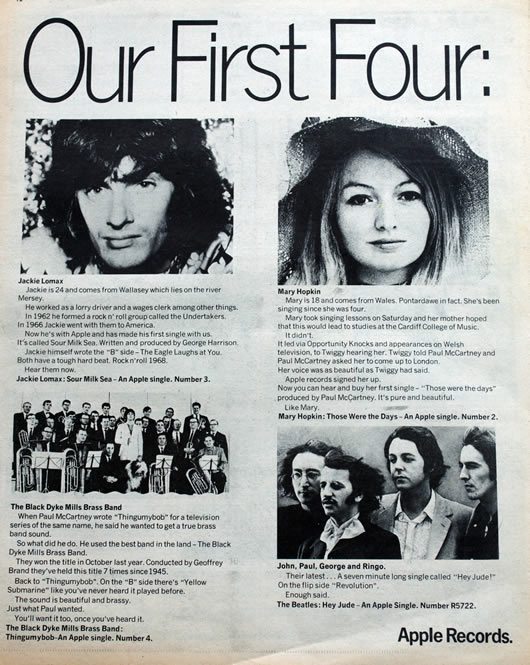











Jean Roy
April 7, 2018 at 4:40 pm
I really loved that article but I think that it should havec included the soundtrack albums from ABKCO plus the Christmas Album from Phil Spector and the Elephant’s Memory album.
PAUL DEAN
August 13, 2018 at 8:45 pm
Amazing Eclectic Collection of different artists , representing the late 1960s .Mainly McCartney’s idea But fully supported by the Other Beatles.giving artists Like James Taylor Mary Hopkin Badfinger Their Big breaks .